Visit a cubic Canadian cabin in the woods: welcome to Rustic Grade
Maurice Martel has designed a contemporary cabin in the woods, Rustic Grade, to make the most of a sylvan plot to the north of Montreal
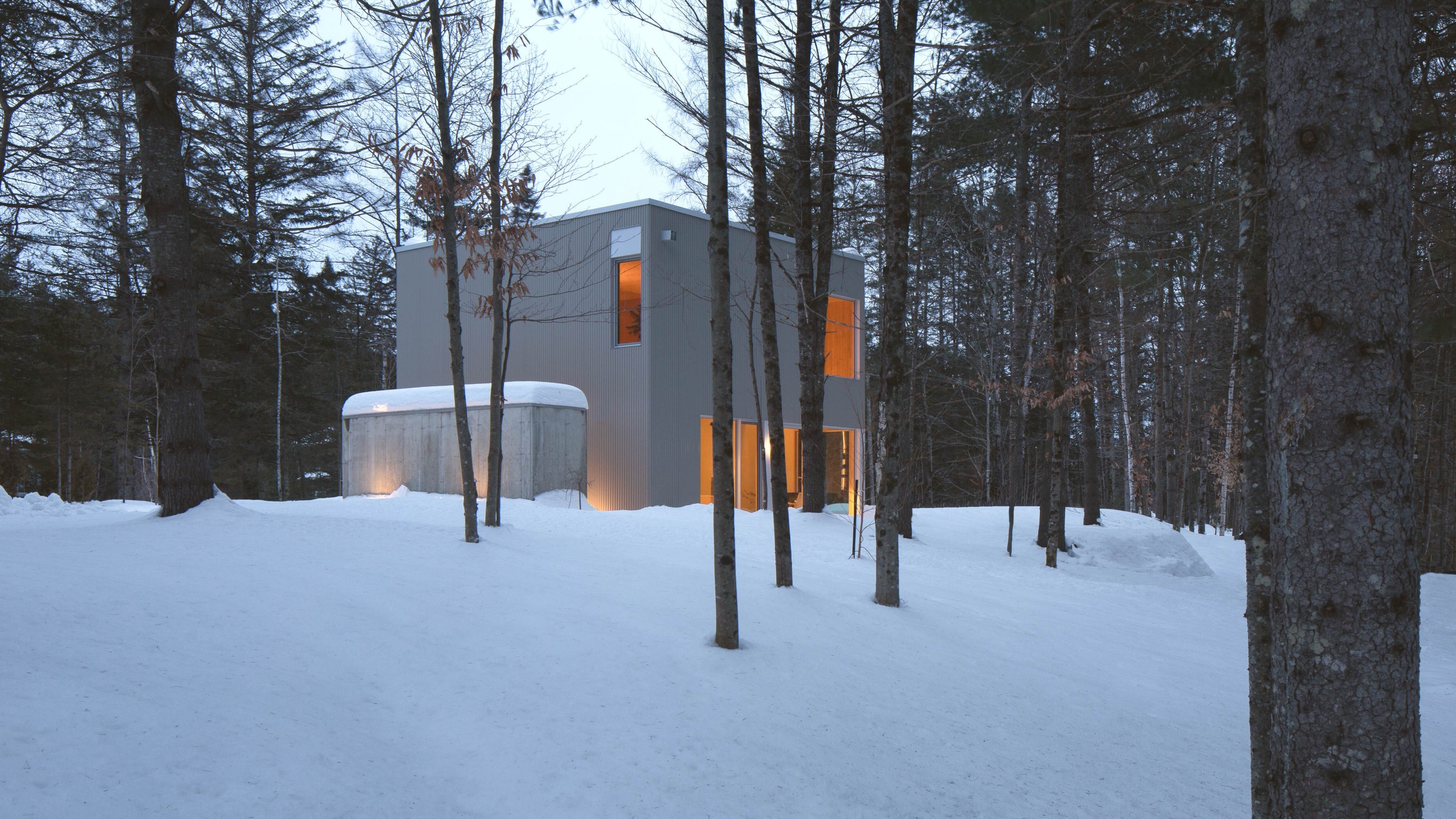
Maurice Martel has completed a contemporary cabin in the woods, a simple country retreat in Mandeville, Quebec, a rural municipality about 120km north of Montreal. Designed as a place to escape from the city in summer and winter, Rustic Grade sits on a secluded, deep-country site, surrounded by a forest and bordered by a river.
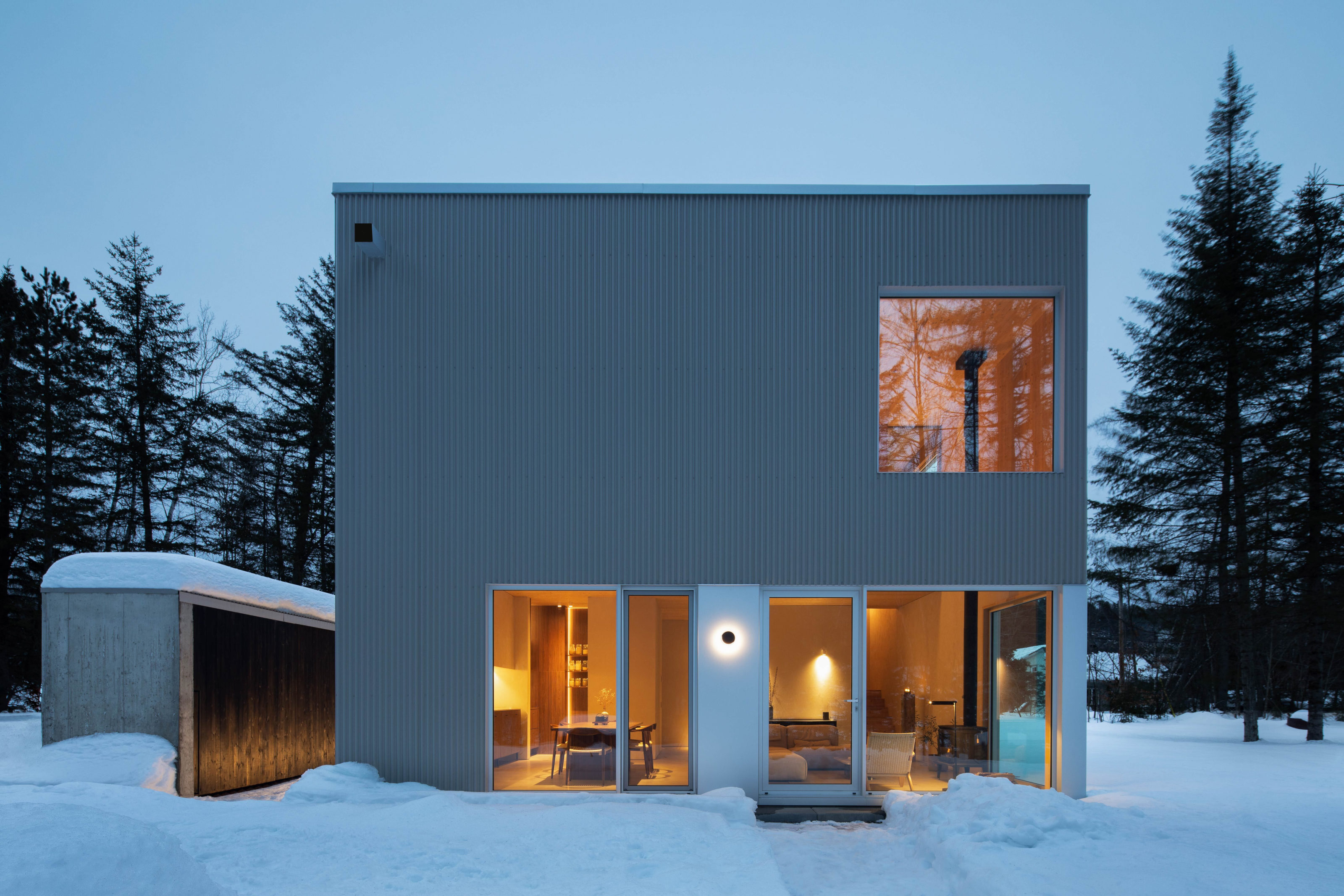
A concrete storage unit adjoins the main house
Rustic Grade: a contemporary cabin in the woods
At 1,400 sq ft, this is a small dwelling by North American standards. The simplicity of the architectural approach is epitomised by the spatial arrangement, which neatly slots all the clients’ requirements into a near-perfect cubic form. This geometric simplicity was chosen to be a deliberate contrast with the richness of the surrounding trees, while also conveying a sense of economy of form and purpose.
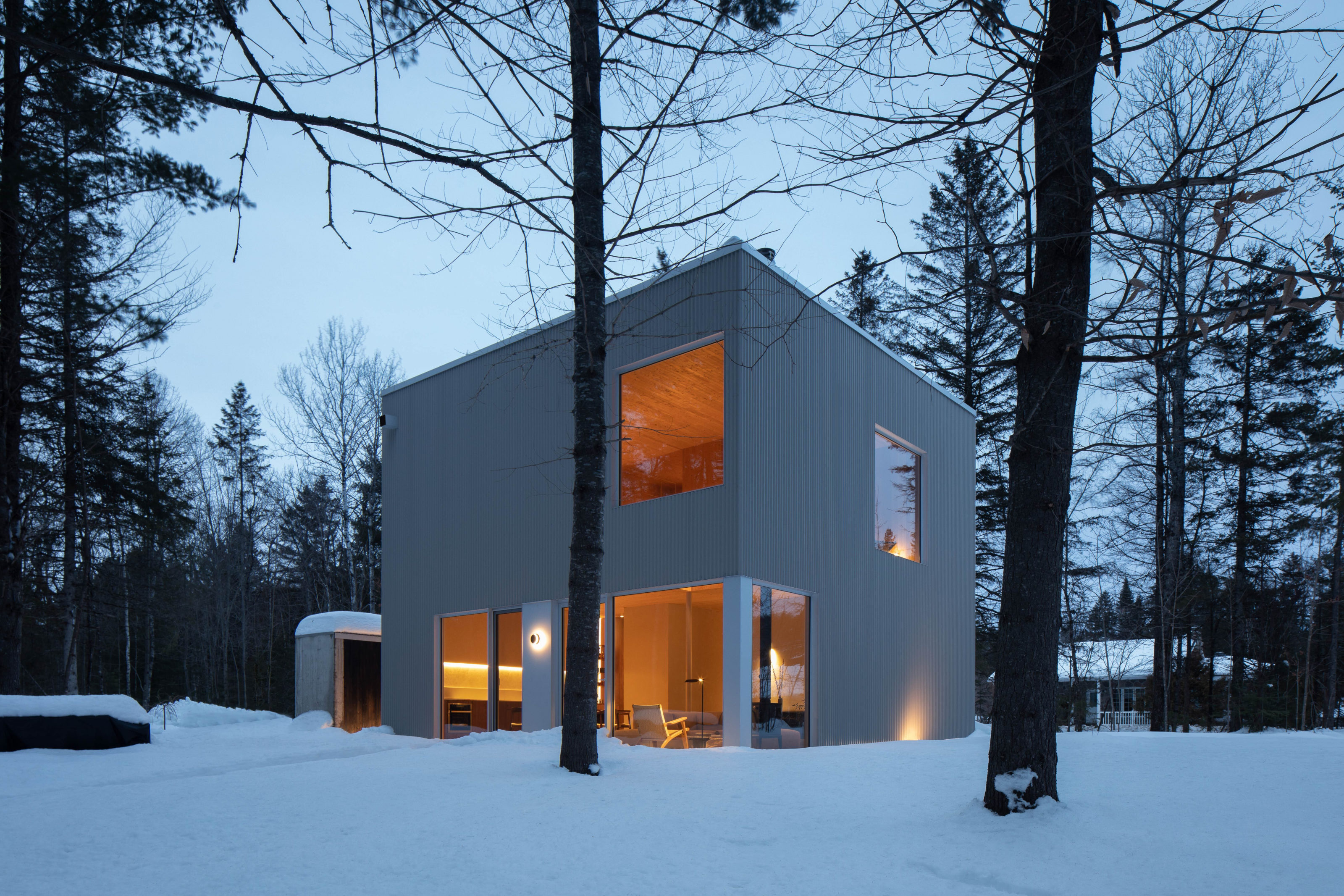
The house is effectively a cube
Energy efficiency also shaped the plan, with every window carefully orientated in order to maximise natural light to the south, as well as forest and river views. External and internal material choices are hard-wearing and minimal. An external storage unit is a study in precision-poured concrete that also shields the porch and front door.
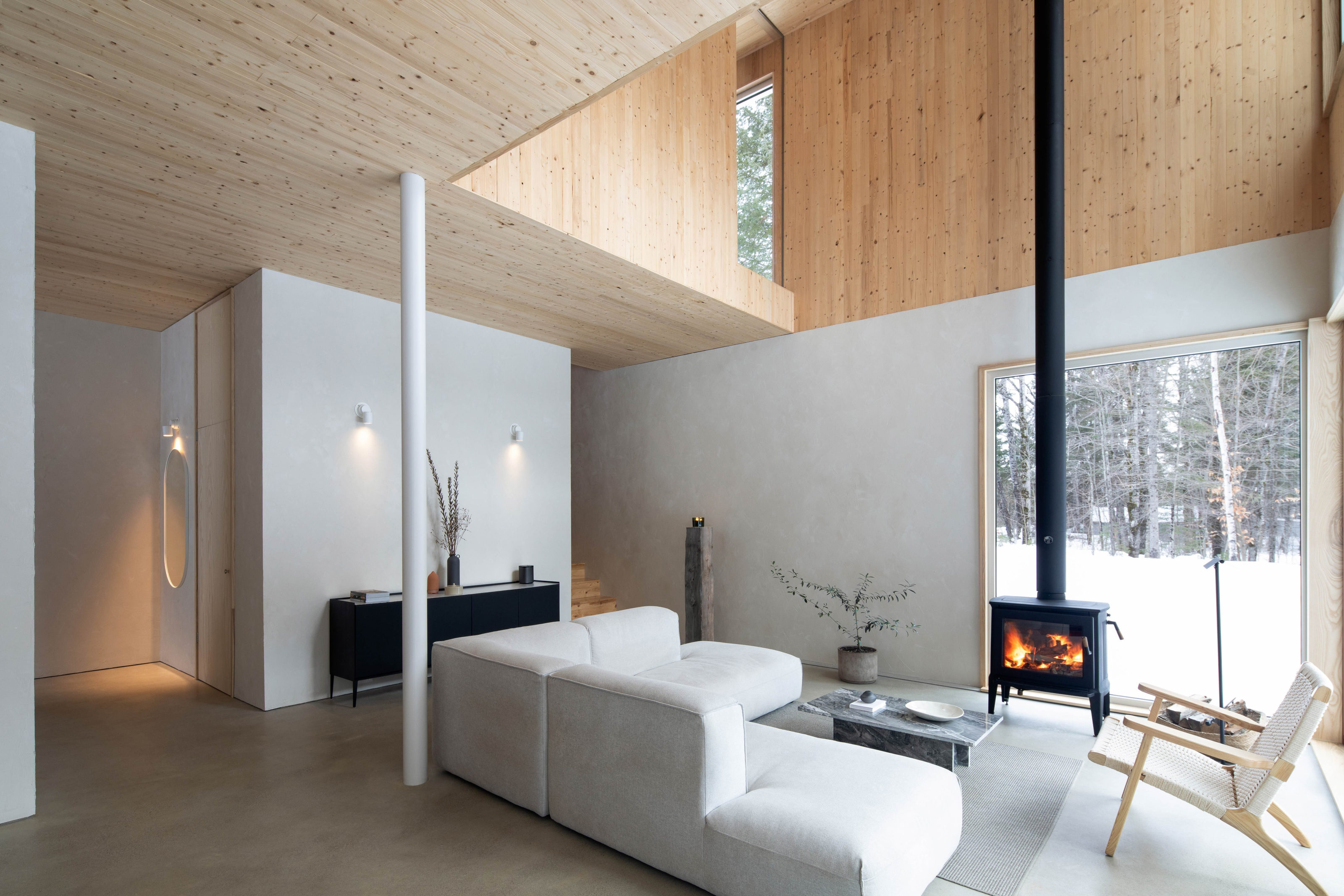
A double-height seating area focuses on a wood burning stove
The interior design, the work of Caroline Tourigny, is set against a backdrop of polished concrete floors and lime-painted walls. The sitting room is a double-height space, rising up 6m, with the upper levels clad in spruce.
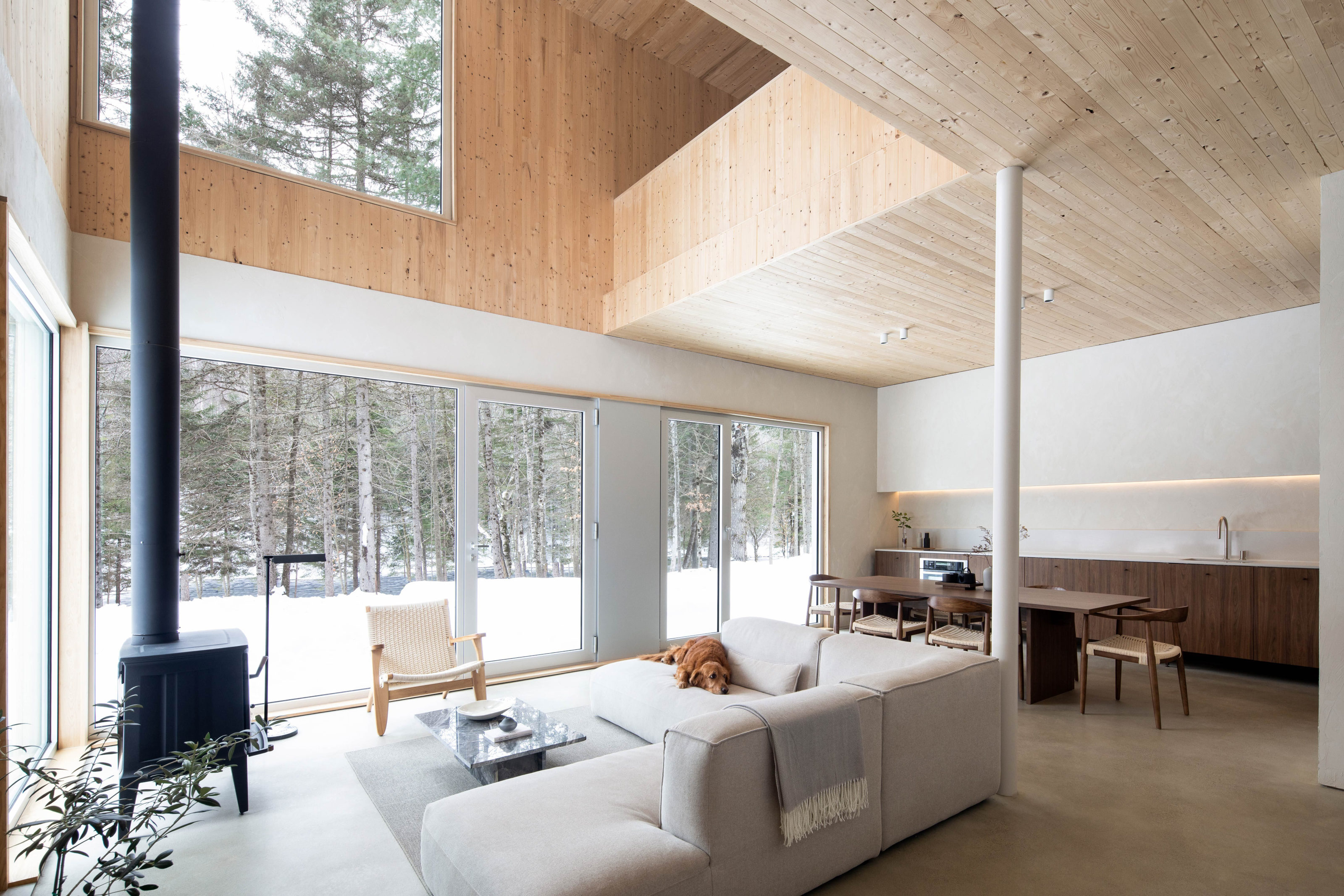
The main seating area looks out across woodland
A seating area is clustered around a wood-burning stove, with the staircase tucked away in one corner and the galley kitchen running the length of the other side of the room. The walnut cabinetry, chairs and table give off a rich, textured ambience that pairs with the exterior vistas.
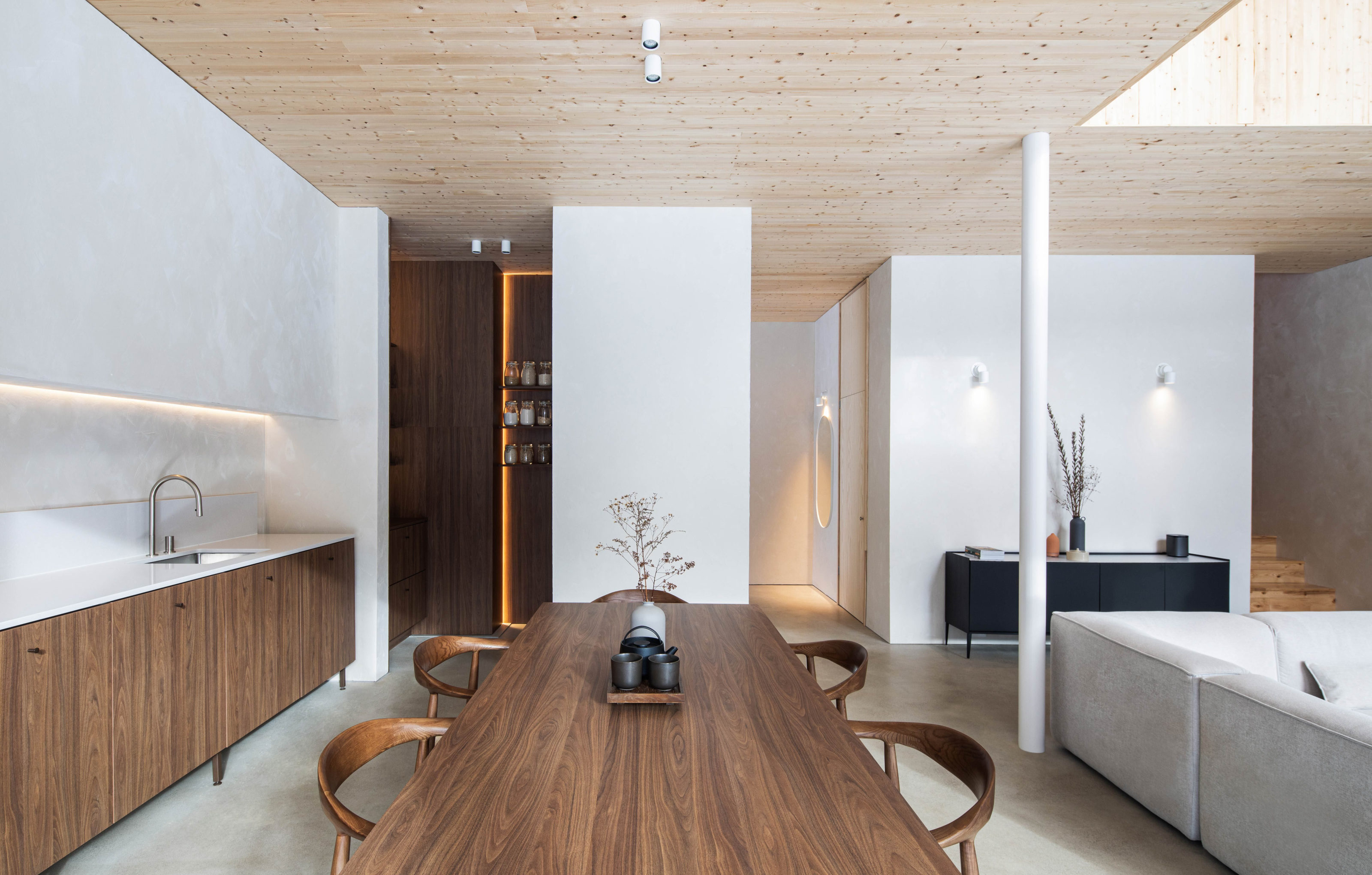
The walnut-clad kitchen
Because of the double-height spaces, the upper level doesn’t take up the entire floor area. Up here, there are three core spaces: a home office overlooking the sitting area, adjoining a raised seating area that doubles up as a guest sleeping space; a bedroom; and a shower room and sauna. The last has a glazed wall to allow residents to take in nature while inside it.
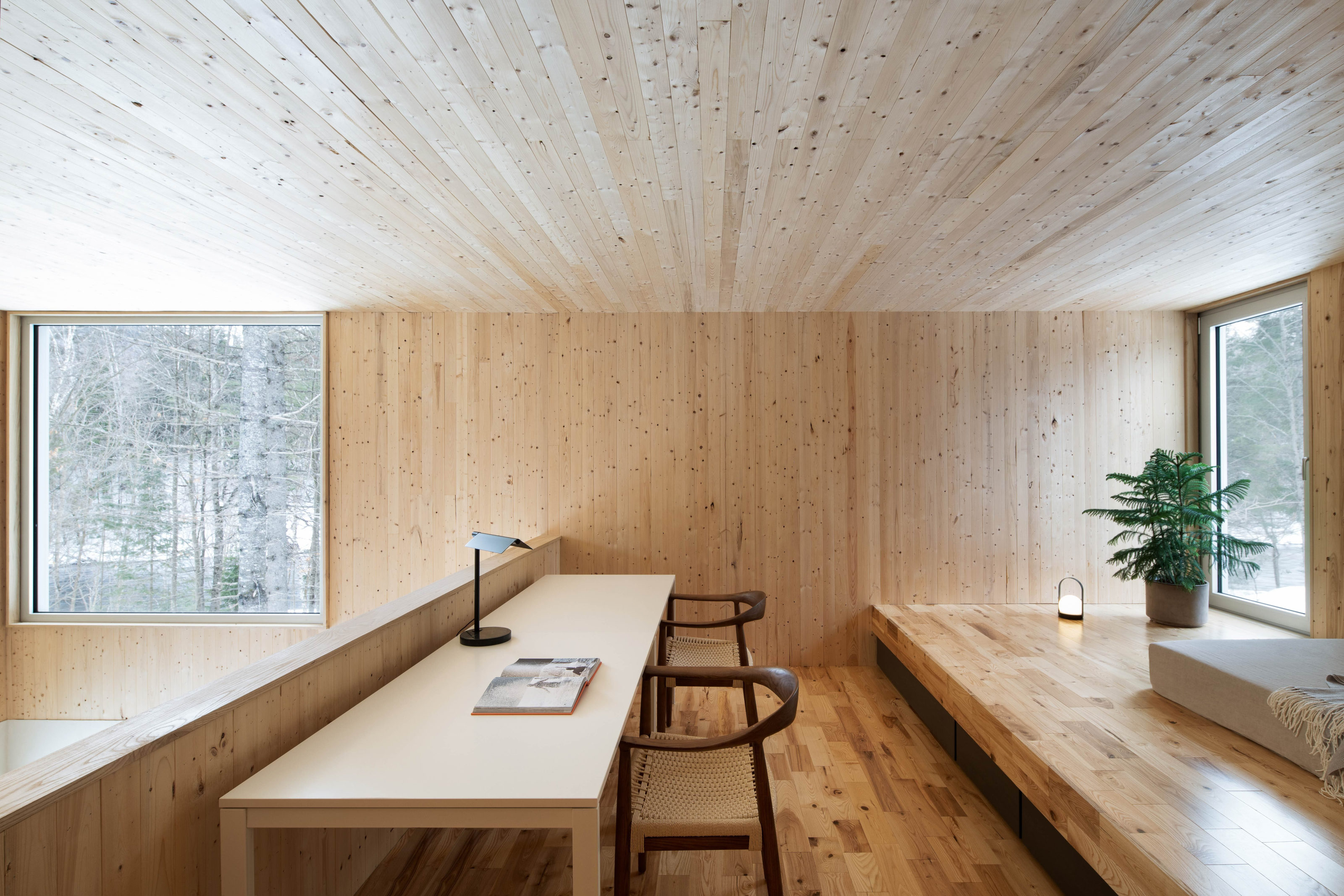
The office area and sleeping platform on the upper level
Martel describes the upper floor as ‘a sanctuary … where the warmth of the rustic spruce envelops the space in an intimate and authentic atmosphere.’ The main bed is a ‘cocoon’, ensconced within the spruce-clad walls with a view across the forest and the sound of the running river in the distance.
Wallpaper* Newsletter
Receive our daily digest of inspiration, escapism and design stories from around the world direct to your inbox.
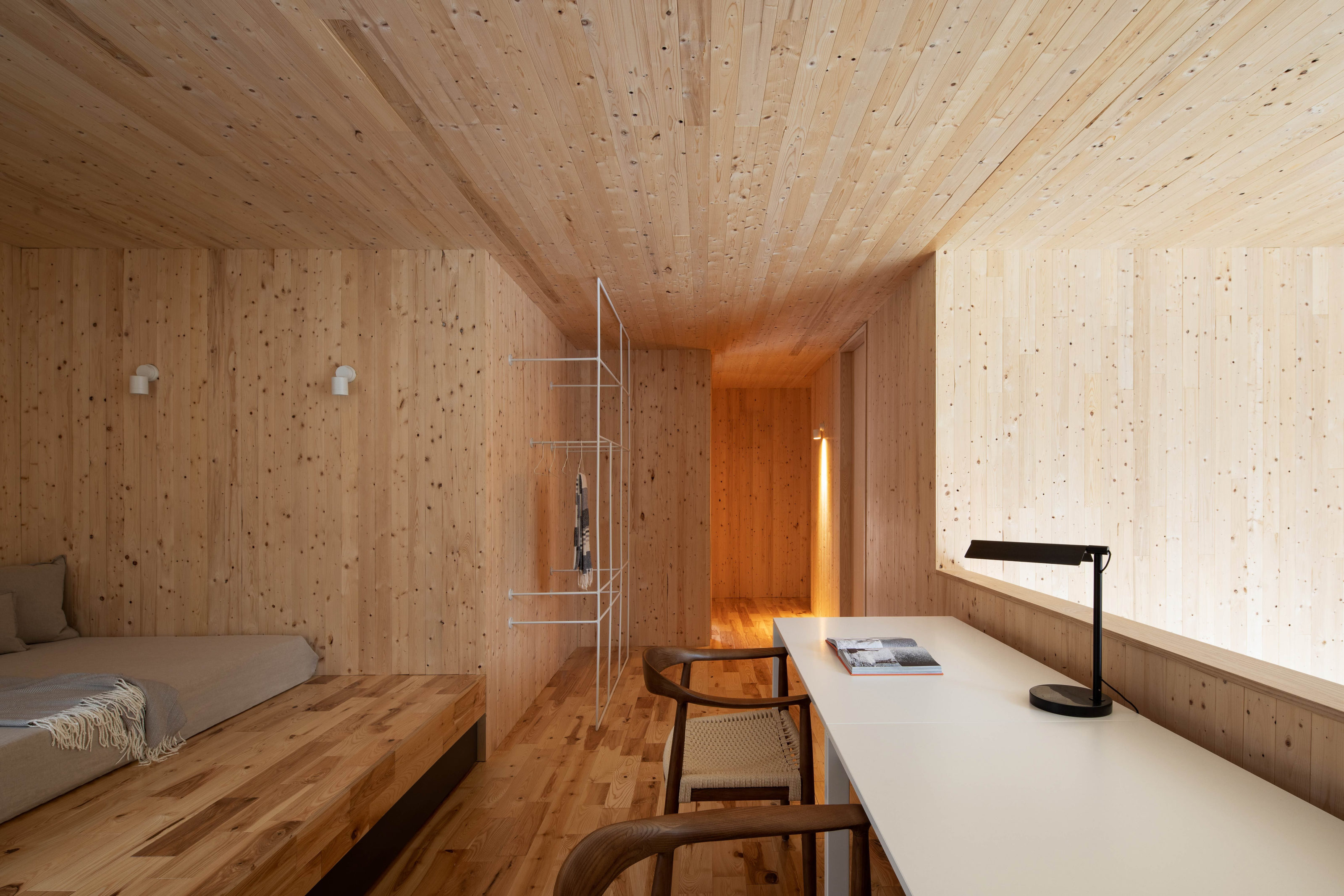
The office area and sleeping platform on the upper level
As a nature-focused getaway, Rustic Grade is hard to beat. Martel set up his studio in 2016. Based in Montreal, the office works across a number of scales and typologies.
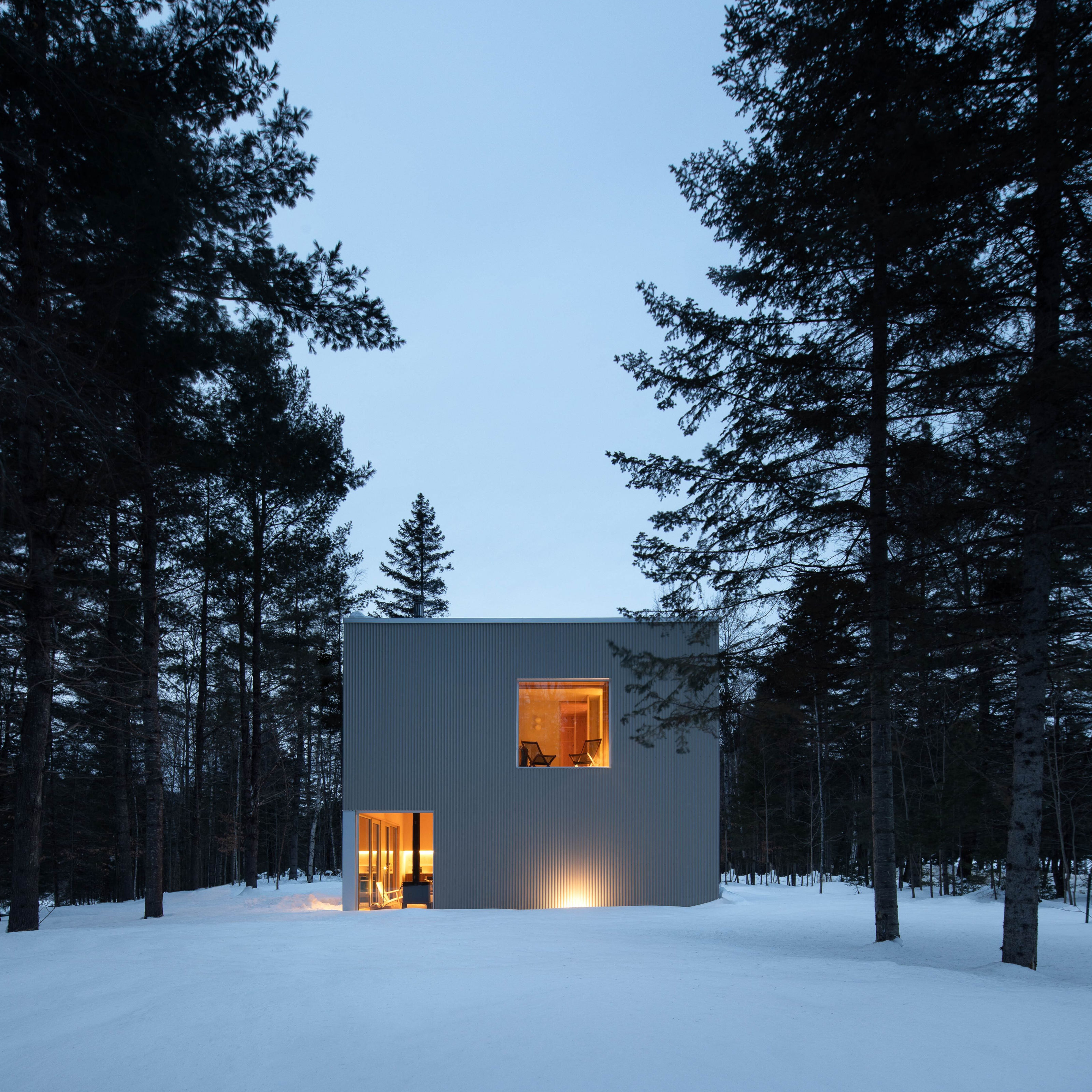
Rustic Grade, Mandeville, Canada, by Maurice Martel architecte
Jonathan Bell has written for Wallpaper* magazine since 1999, covering everything from architecture and transport design to books, tech and graphic design. He is now the magazine’s Transport and Technology Editor. Jonathan has written and edited 15 books, including Concept Car Design, 21st Century House, and The New Modern House. He is also the host of Wallpaper’s first podcast.
-
 Put these emerging artists on your radar
Put these emerging artists on your radarThis crop of six new talents is poised to shake up the art world. Get to know them now
By Tianna Williams
-
 Dining at Pyrá feels like a Mediterranean kiss on both cheeks
Dining at Pyrá feels like a Mediterranean kiss on both cheeksDesigned by House of Dré, this Lonsdale Road addition dishes up an enticing fusion of Greek and Spanish cooking
By Sofia de la Cruz
-
 Creased, crumpled: S/S 2025 menswear is about clothes that have ‘lived a life’
Creased, crumpled: S/S 2025 menswear is about clothes that have ‘lived a life’The S/S 2025 menswear collections see designers embrace the creased and the crumpled, conjuring a mood of laidback languor that ran through the season – captured here by photographer Steve Harnacke and stylist Nicola Neri for Wallpaper*
By Jack Moss
-
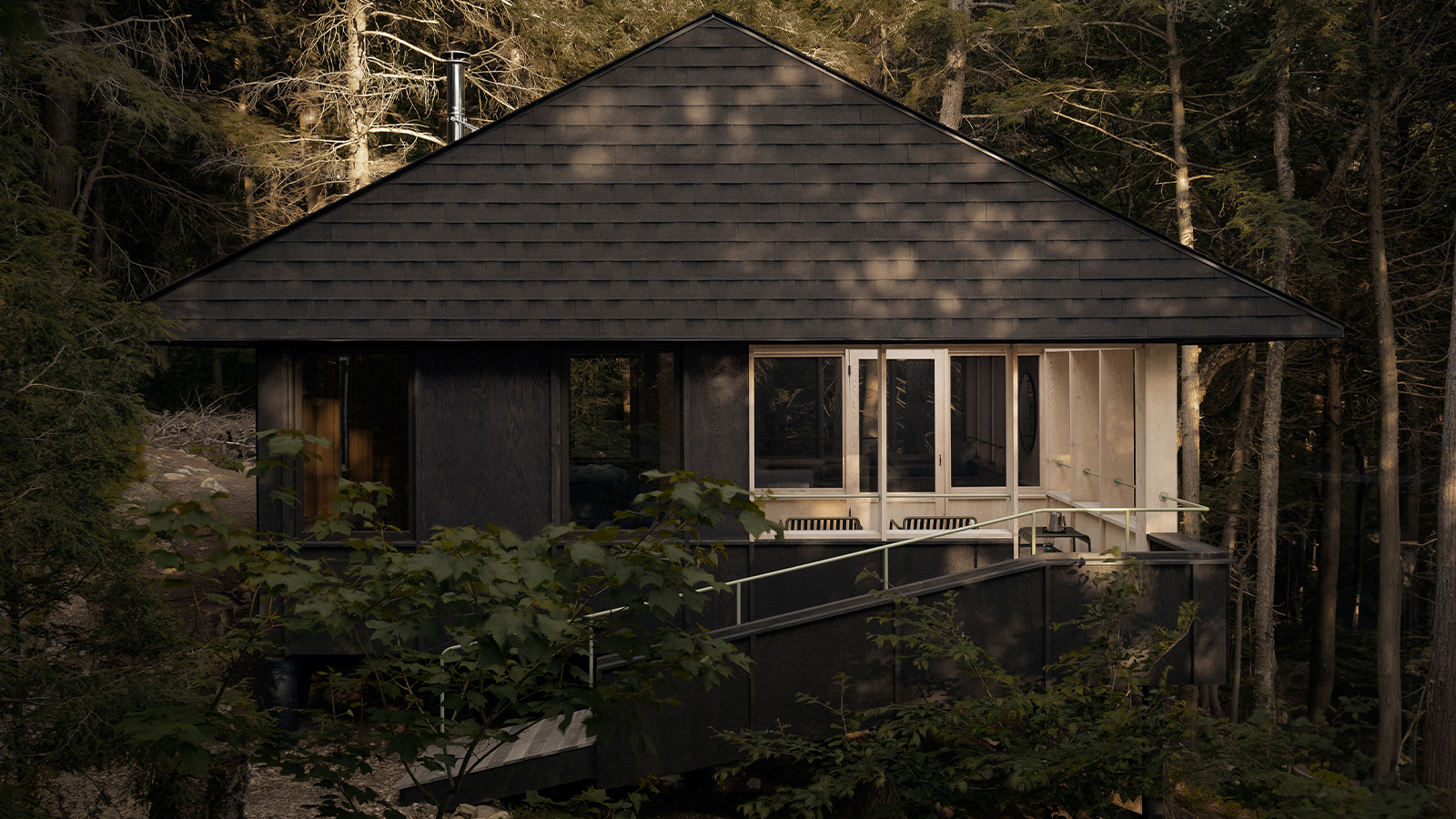 Smoke Lake Cabin is an off-grid hideaway only accessible by boat
Smoke Lake Cabin is an off-grid hideaway only accessible by boatThis Canadian cabin is a modular and de-mountable residence, designed by Anya Moryoussef Architect (AMA) and nestled within Algonquin Provincial Park in Ontario
By Tianna Williams
-
 Ten contemporary homes that are pushing the boundaries of architecture
Ten contemporary homes that are pushing the boundaries of architectureA new book detailing 59 visually intriguing and technologically impressive contemporary houses shines a light on how architecture is evolving
By Anna Solomon
-
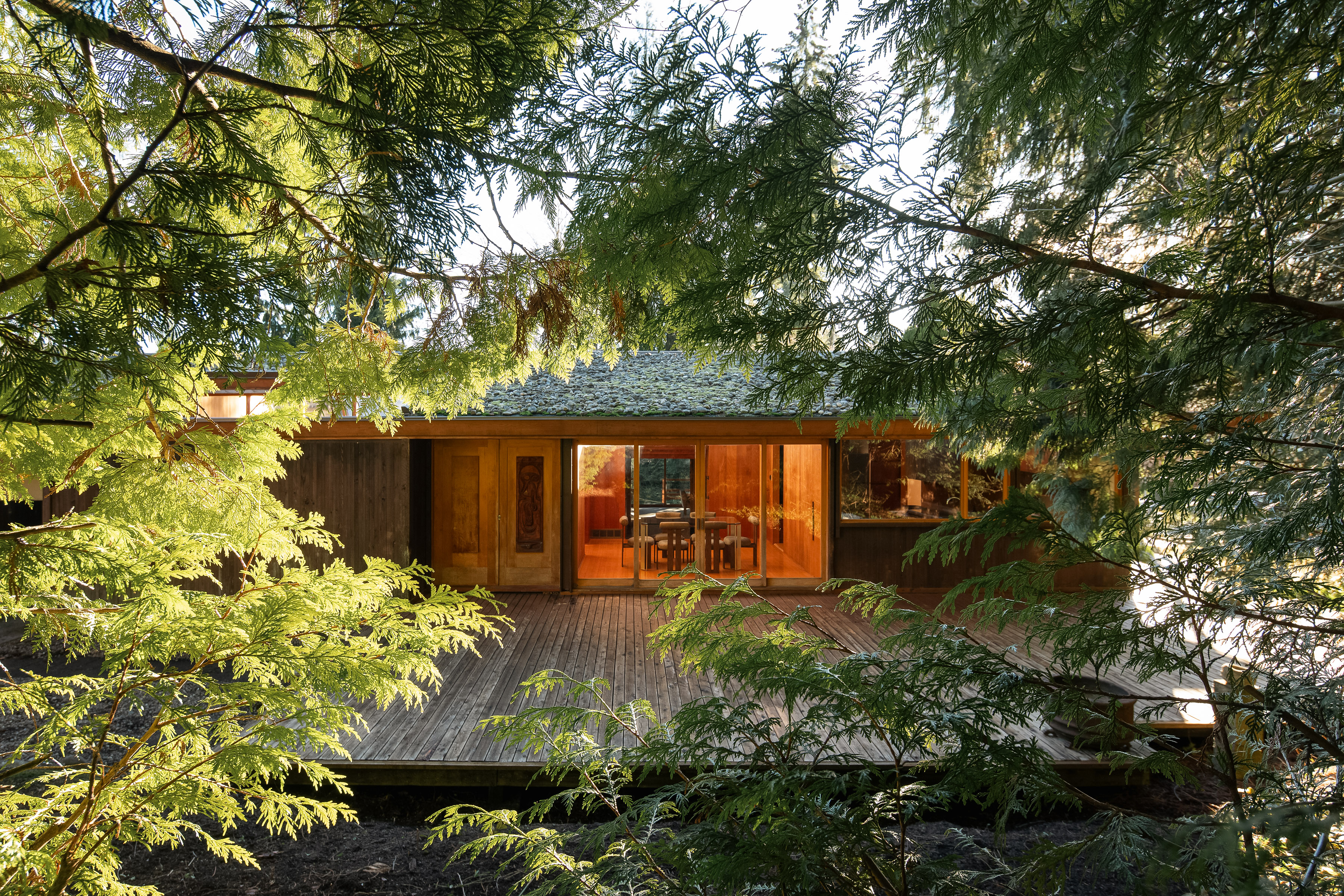 Explore the Perry Estate, a lesser-known Arthur Erickson project in Canada
Explore the Perry Estate, a lesser-known Arthur Erickson project in CanadaThe Perry estate – a residence and studio built for sculptor Frank Perry and often visited by his friend Bill Reid – is now on the market in North Vancouver
By Hadani Ditmars
-
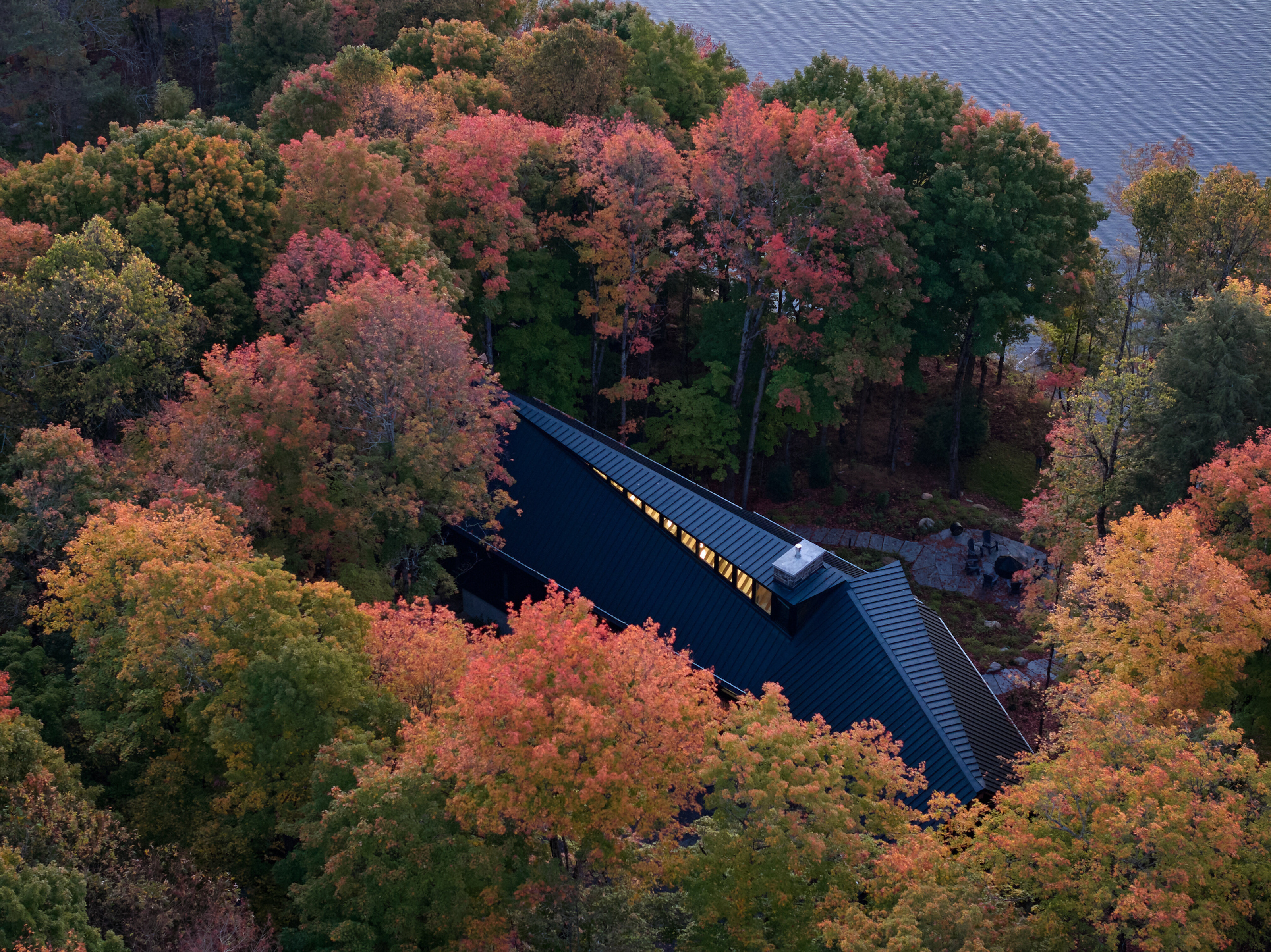 A new lakeshore cottage in Ontario is a spectacular retreat set beneath angled zinc roofs
A new lakeshore cottage in Ontario is a spectacular retreat set beneath angled zinc roofsFamily Cottage by Vokac Taylor mixes spatial gymnastics with respect for its rocky, forested waterside site
By Jonathan Bell
-
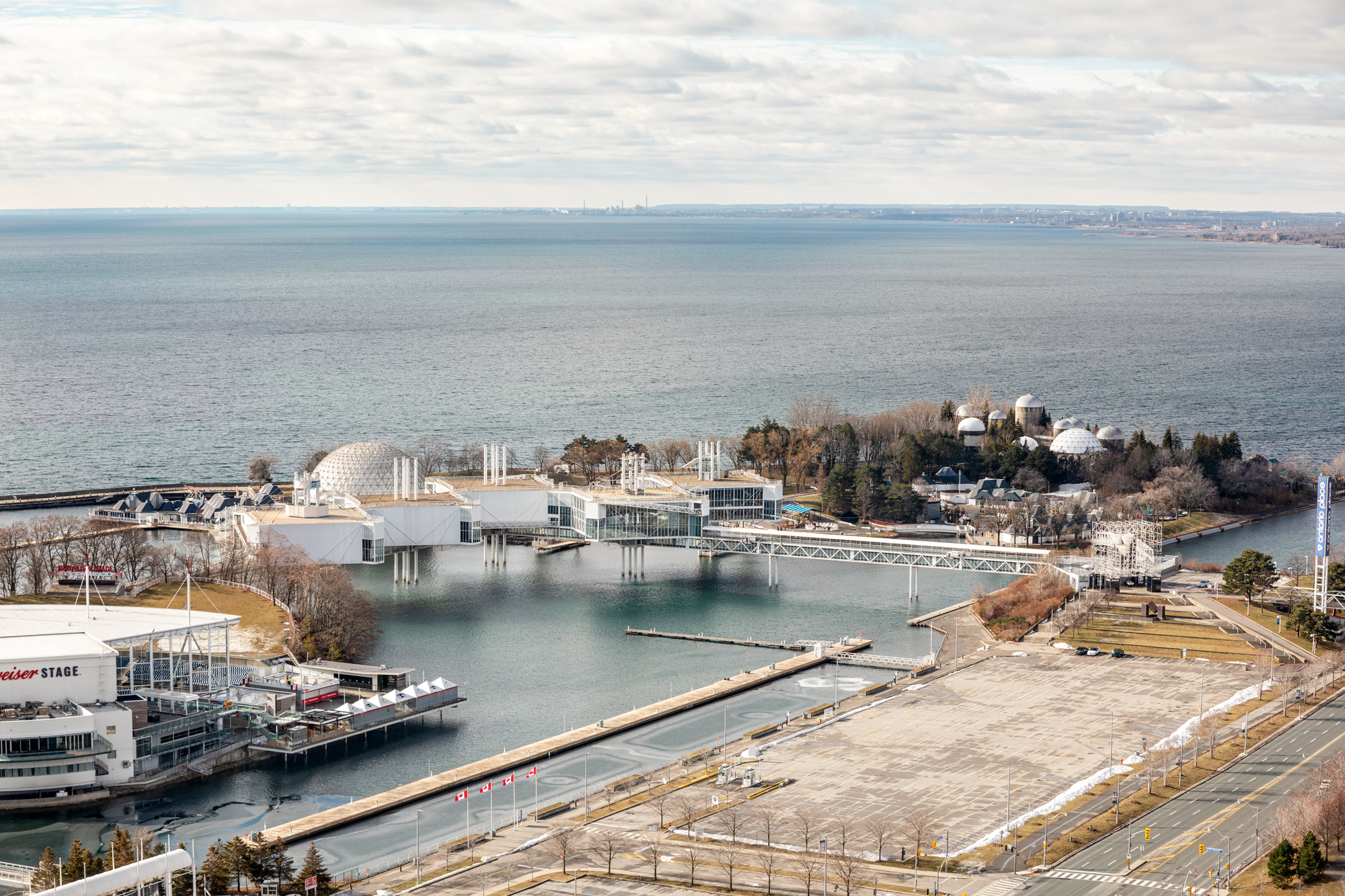 We zoom in on Ontario Place, Toronto’s lake-defying 1971 modernist showpiece
We zoom in on Ontario Place, Toronto’s lake-defying 1971 modernist showpieceWe look back at Ontario Place, Toronto’s striking 1971 showpiece and modernist marvel with an uncertain future
By Dave LeBlanc
-
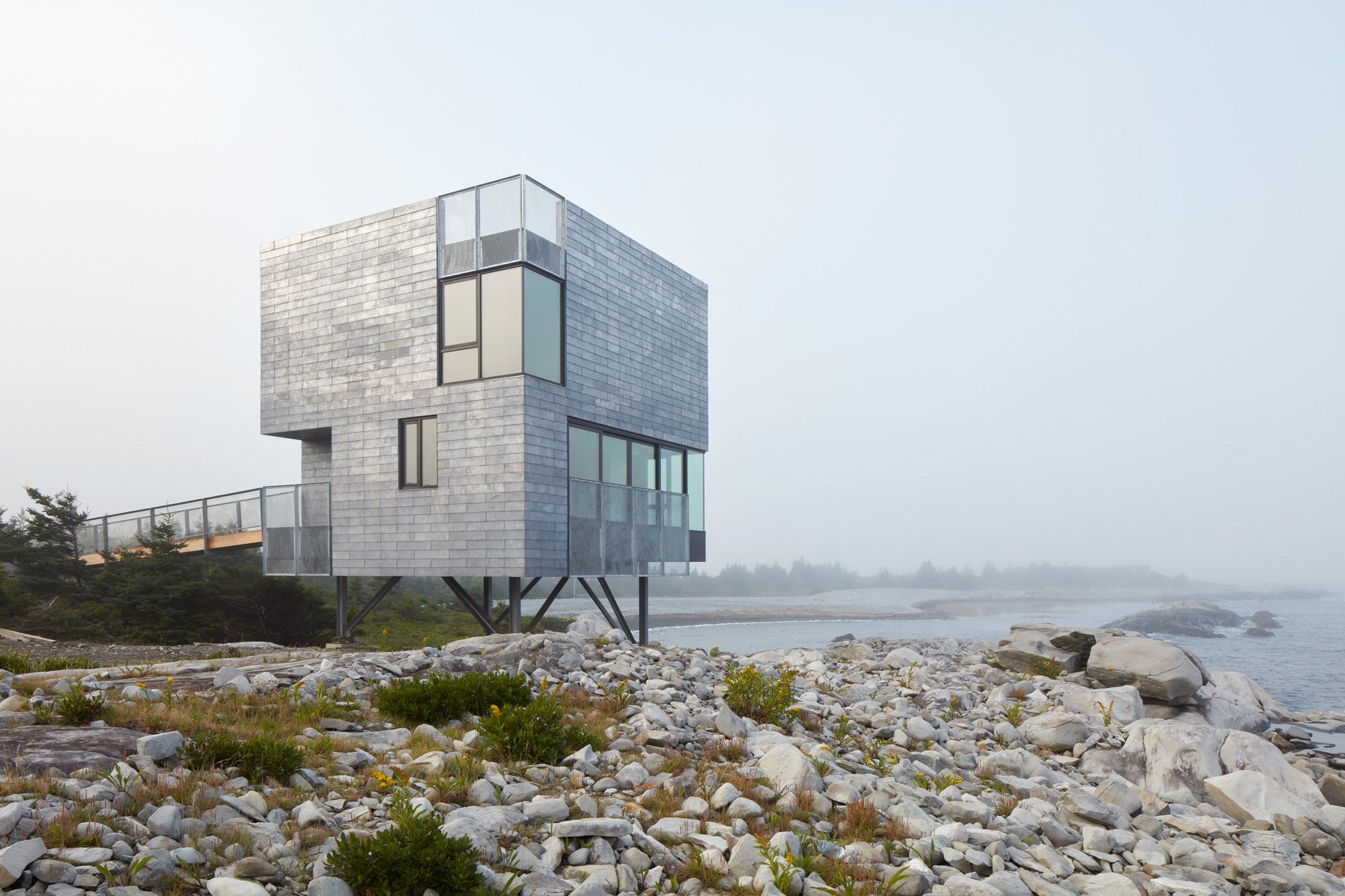 This Canadian guest house is ‘silent but with more to say’
This Canadian guest house is ‘silent but with more to say’El Aleph is a new Canadian guest house by MacKay-Lyons Sweatapple, designed for seclusion and connection with nature, and a Wallpaper* Design Awards 2025 winner
By Ellie Stathaki
-
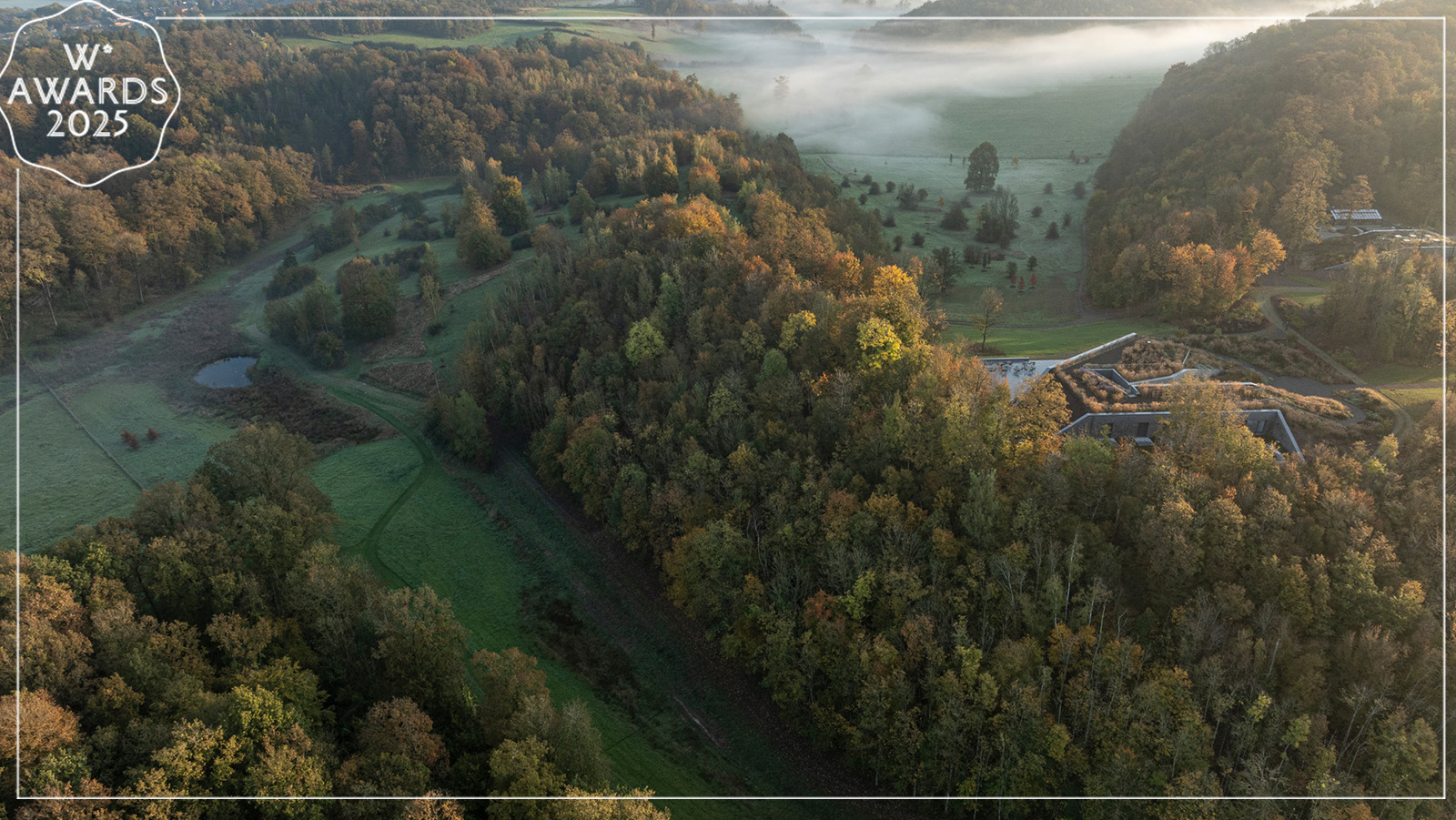 Wallpaper* Design Awards 2025: celebrating architectural projects that restore, rebalance and renew
Wallpaper* Design Awards 2025: celebrating architectural projects that restore, rebalance and renewAs we welcome 2025, the Wallpaper* Architecture Awards look back, and to the future, on how our attitudes change; and celebrate how nature, wellbeing and sustainability take centre stage
By Ellie Stathaki
-
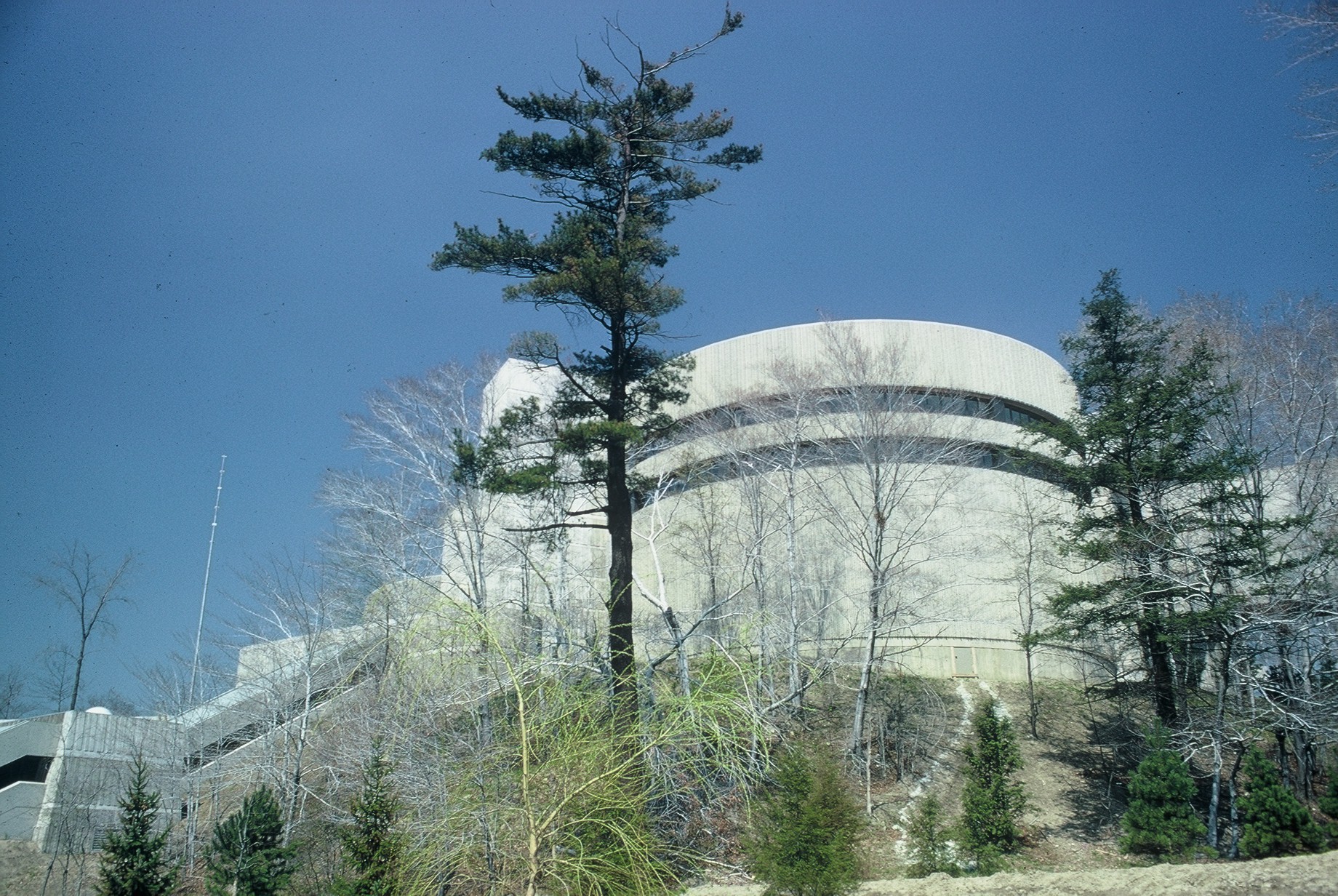 The case of the Ontario Science Centre: a 20th-century architecture classic facing an uncertain future
The case of the Ontario Science Centre: a 20th-century architecture classic facing an uncertain futureThe Ontario Science Centre by Raymond Moriyama is in danger; we look at the legacy and predicament of this 20th-century Toronto gem
By Dave LeBlanc